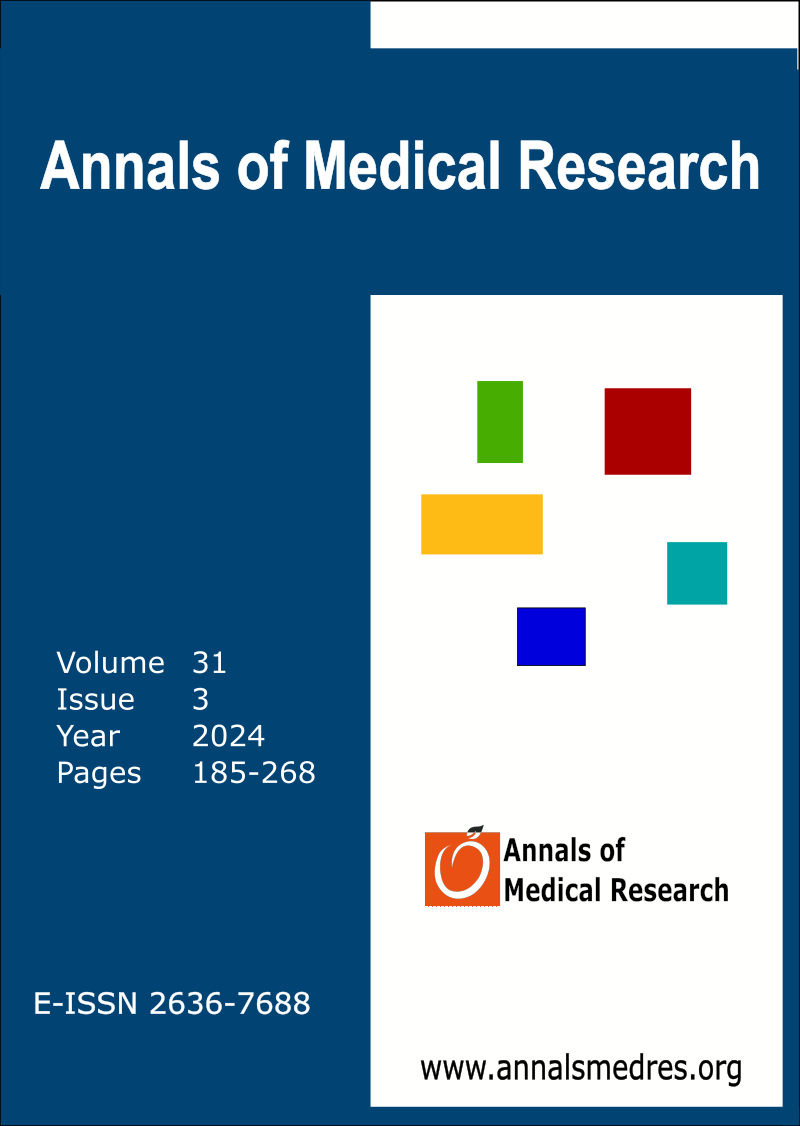Treatment of concomitant SLAP lesion in patients aged 45 and above who underwent arthroscopic rotator cuff repair: Tenotomy versus labral repair?
Keywords:
Rotator cuff injuries, SLAP tears, Shoulder injuries, Arthroscopic surgeriesAbstract
Aim: The current study aimed to compare the clinical and functional outcomes of the long-head biceps tendon (LHBT) tenotomy or labrum repair for the biceps-labral complex in the presence of superior labrum anterior-posterior (SLAP) lesion accompanying Goutallier type 0-I-II rotator cuff injury in patients aged 45 and above who underwent arthroscopic repair.
Materials and Methods: A retrospective analysis was conducted on 1,148 patients who underwent arthroscopic shoulder surgery. A total of 223 patients, who underwent arthroscopic repair for Goutallier type 0, I, and II rotator cuff tears (RCT) and received simultaneous treatment for SLAP lesions through either LHBT tenotomy or labral repair, were included in the study. Patients were divided into two groups according to the treatment of SLAP lesions such as tenotomy (n=78) and repair (n=145). Demographic data, pre-operative, post-operative 3-month, and 12-month range of motion, visual analog scale (VAS), and Constant Murley Scale (CMS) were compared.
Results: Flexion and external rotation were significantly higher in the tenotomy group, and internal rotation in the repair group (p<0.001, <0.001, 0.005, respectively). Although the VAS score was significantly lower in the tenotomy group compared to the repair group in the 3rd-month postoperative control (p<0.001), the difference between the two groups disappeared in the 12th-month control (p=0.081). The CMS score was low in the tenotomy group preoperatively (p=0.015), by the 12-month follow-up, although there was a severe increase in both groups, there was no statistically significant difference between them (p=0.071).
Conclusion: The study determined that both LHBT tenotomy and labral repair treatments for SLAP lesions, performed in conjunction with arthroscopic rotator cuff repair, are successful methods in terms of function, pain, and range of motion changes. It was observed that flexion and external rotation outcomes were better in tenotomy patients, while internal rotation was more favorable in patients undergoing labral repair.
Downloads
Published
Issue
Section
License
Copyright (c) 2024 The author(s)

This work is licensed under a Creative Commons Attribution-NonCommercial-NoDerivatives 4.0 International License.
CC Attribution-NonCommercial-NoDerivatives 4.0






